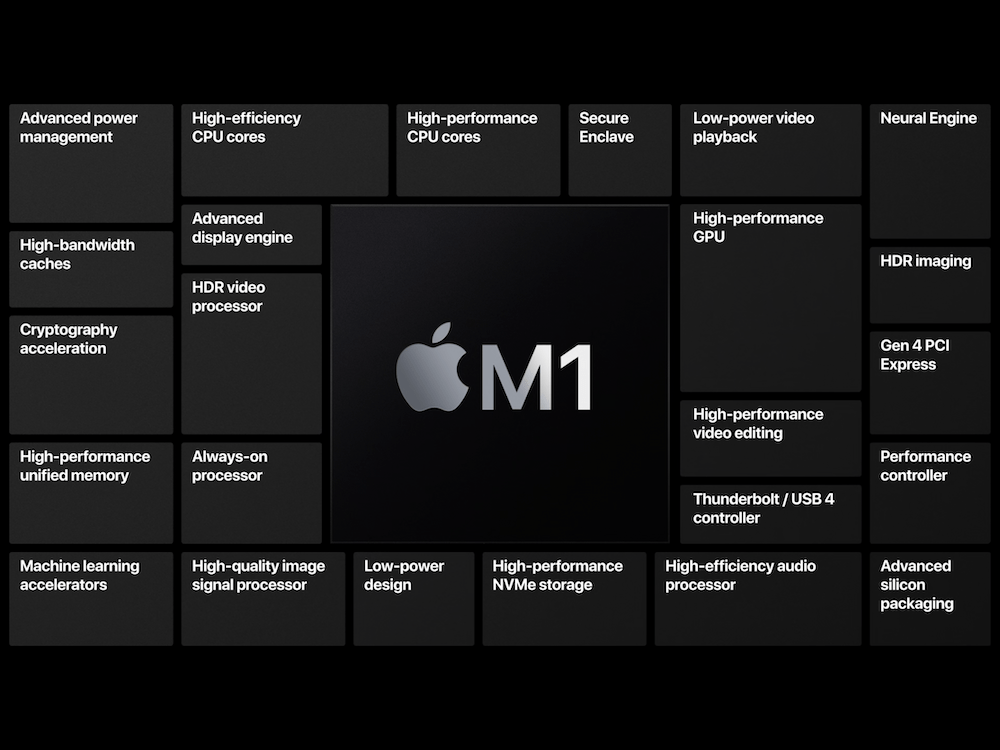Succession: Does Tim Cook’s Apple ponder life after ARM?

M1 chip Apple claims
Apple is migrating its entire hardware universe over to ARM-based Apple Silicon chips, but Nvidia’s in-progress move to acquire the smaller chip designer may have given the iPhone manufacturer pause for thought.
RISC and… reward?
Apple seems to be considering alternatives to ARM. Why wouldn’t it? It’s always good to make contingency plans. It now seeks a programmer who with knowledge of RISC-V.
Like ARM or Intel, RISC-V is an alternative processor technology, but unlike them it is free and open to use. It has lots of good things, such as inherent memory frugality, the ability to handle quad FPUs and 128-bit addressing, more here.
The tech was originally mooted by renowned UC Berkeley professors David Patterson and Krste Asanović. You could say they know the industry. The former also developed RISC (Reduced Instruction Set Computing) and RAID (Redundant Array of Inexpensive Disks) in the 80s. Founded in 2015 as the RISC-V Foundation with 29 members, RISC-V International is now a global nonprofit organization with over 2,000 members across over 70 nations.
Members include Apple’s old GPU partner, Imagination Technologies, and 5G vendor, Qualcomm, but not Apple itself.
Rivos makes a claim to fame
RISC-V proponents include many smaller firms, but I’m particularly curious about Rivos. The latter is a start-up that seems to have bought in multiple engineers from Apple, along with others from Google, Qualcomm, Intel and more.
An interesting Semi Analysis report looks at some of the names behind Rivos.
For me, one person seems particularly worthy of note: Brian Campbell. He is the former director of engineering at P.A. Semi who subsequently became Apple’s Director of Hardware Technologies following Apple’s historically important decision to purchase that company.
You’ve probably already benefited from Campbell’s work, which seems to have at the very least influenced silicon engineering, efficiency, and memory handling across all Apple hardware.
He’s joined by many experienced engineers, including a former P.A. Semi VP Hardware & Systems Architecture and an ex-Apple Senior Director of CPU Design, along with experienced engineers from pretty much every firm in chip design. In other words, the company is run and staffed by seasoned experts with experience building chips for mass market consumer electronics. I think this sounds serious.
Keep hold of your chips
You can’t read too much into the existence of one company, of course.
People leave Apple to pursue new ventures all the time. Indeed, a few years working with the company is sometimes seen as a golden ticket to more ambitious CE industry dreams.
But it is surely telling that Apple is now searching for an engineer to use a technology some of its silicon design leaders have already left the company to pursue. In the shifting world of Apple speculation, it’s hard to avoid feeling that this might mean something. Or nothing. Speculation is like clouds on a bright day, constantly shifting.
Apple watchers who recall the obstacle Apple’s AIM Alliance partners became to the evolution of Power PC Macs may also think it makes sense to seek out alternatives to ARM processor design. I’m sure Apple always keeps an eye on such things.
ARM ain’t over yet
In any case, while we may not be at the pinnacle of what Apple can do with ARM-based chips just yet – the M-series and A-series processors should have plenty of upside, particularly around new process tech – but there will come a time when the company needs to take a different direction. Particularly if ARM’s strategic mission changes in any way, post-acquisition.
It is also possible that Apple may simply be considering RISC-V for the development of other components used in its products, such as display drivers or 5G radios. The job description as stated here says:
“The programmer will work in a team that’s “implementing innovative RISC-V solutions and state of the art routines. This is to support the necessary computation for such things as machine learning, vision algorithms, signal and video processing.”
This makes it likely the initial steps will be off-processor, but still of consequence.
Always look forward
Whatever the true story might turn out to be, it is reassuring that Apple continues to invest in products it may never ship, including processor designs.
It’s a sensible step that shows company management is open to alternative futures.
Every company should do the same.
It’s common sense, for example, that any firm should continue to build relationships with alternative suppliers, innovate in hardware/software design, and nurture and invest in staff with the potential to become company leaders.
Succession planning should, by rights, be a constant hum within any enterprise. Apple’s successful transition from the leadership of Steve Jobs to that of Tim Cook and its migration from Intel to M1 are both clear illustrations of quietly-made plans taking effect.
One big truth is that Apple must need a clear processor road map for its growing product portfolio. After all, with its first generation AR glasses anticipated for release next year and what feels like the looming subsequent debut of Apple Car, controlling the whole widget will require consistent control of the processor design. And this will become increasingly important in the decades to come. The open RISC-V chip architecture (or something else) may (or may not) help Apple to achieve that. Despite which, I strongly suspect we’ll be driving the Car before we hear too much about its next processor plan, or any other transitions the company may have planned.
Please follow me on Twitter, or join me in the AppleHolic’s bar & grill and Apple Discussions groups on MeWe.




